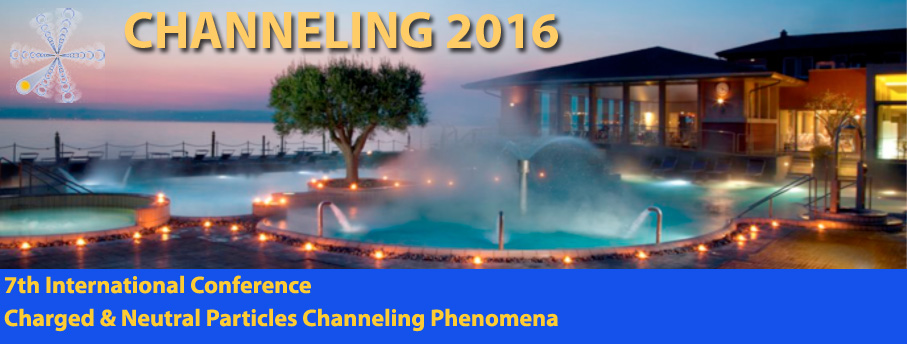Speaker
Prof.
Alexander Lobko
(Institute for Nuclear Problems, Belarusian State University)
Description
It was predicted and observed in 1980-th [1-6] that both electron-positron pair production by gamma-quanta and gamma-quanta emission by electrons and positrons are strongly enhanced at the energies exceeding tens of GeV in oriented crystals. Crystals are widely used in the electromagnetic calorimeters, e.g. the electromagnetic calorimeter ECAL of Compact Muon Solenoid at LHC is made of PWO crystals. In spite of this, the influence of the crystal structure on the process of electron, positron and gamma-quanta energy measurement was neither analyzed, nor taken into consideration in the determination of both the measured energy value and resolution. We will report the first results of simulations of the electromagnetic shower development accelerated by the processes [1-6] in the PWO crystals manufactured for the ECAL CMS.
Two samples from the PWO mass production batch have been investigated through the parallel X-ray beam diffraction of the Cu=0.154179 nm line on the Ultima IV diffractometer. Both of them clearly demonstrate the presence of the crystalline structure; however the quality of the latter differs considerably.
To estimate the PWO crystal structure influence on the energy deposition, the GEANT4 simulation of electromagnetic shower development in a structureless PWO standard sample routinely implemented in GEANT4 was used as a benchmark. First, the characteristics of both pair production and gamma-quantum emission in the PWO crystal have been evaluated by the method [7,8] for various gamma-quantum and electron (positron) energies. The obtained pair production probabilities and electron (positron) energy loss lengths, increased due to the influence of the PWO crystal structure, have been introduced into the GEANT4 simulations through the increase of the corresponding values for the structureless PWO. These simulations demonstrates that the maximum of the energy deposition by the 100 GeV gamma-quantum is shifted by several radiation lengths while the deposited energy only weakly changes under the influence of the electromagnetic shower acceleration induced by the PWO crystal structure.
Obtained results can be used to refine the methods of new particle mass measurements by Compact Muon Solenoid at LHC (CERN).
References
1. V.G. Baryshevsky, V.V. Tikhomirov, Sov. J. Nucl. Phys. 36 (1982) 153; Sov. Phys. JETP 58 (1983) 135.
2. V.V. Tikhomirov, Vestn. Belorussk. Univ. Ser. 1, 3 (1983) 27 [in Russian].
3. V.G. Baryshevsky, V.V. Tikhomirov, Sov. Phys. Uspekhi 32 (1989) 1013.
4. J.C. Kimball, N. Cue, Phys. Rep. 69 (1985) 125.
5. V.N. Baier, V.M. Katkov, V.M. Strakhovenko, Electromagnetic Processes at High Energies in Oriented Single Crystals (World Scientific, Singapore), 1998, 568 p.
6. A.I. Akhiezer, N.F. Shulga, High-Energy Electrodynamics in Matter (Gordon & Breach, New York), 1996, 400 p.
7. V. Guidi, L. Bandiera, V.V. Tikhomirov, Phys. Rev. A86 (2012) 042903.
8. L. Bandiera, E. Bagli, V. Guidi, A. Mazzolari, A. Berra, D. Lietti, M. Prest, E. Vallazza, D. De Salvador, V. Tikhomirov, Phys. Rev. Lett. 111 (2013) 255502.
Primary author
Prof.
Victor Tikhomirov
(Institute for Nuclear Problems, Belarusian State University)
Co-authors
Prof.
Alexander Lobko
(Institute for Nuclear Problems, Belarusian State University)
Mr
Alexei Sytov
(Institute for Nuclear Problems, Belarusian State University)
Prof.
Mikhail Korjik
(Institute for Nuclear Problems, Belarusian State University)
Mr
Viktor Haurylavets
(Institute for Nuclear Problems, Belarusian State University)
Mr
Vitaly Mechinsky
(Institute for Nuclear Problems, Belarusian State University)
Prof.
Vladimir Baryshevsky
(Institute for Nuclear Problems, Belarusian State University)
Prof.
Vladimir Uglov
(Belarusian State University)

